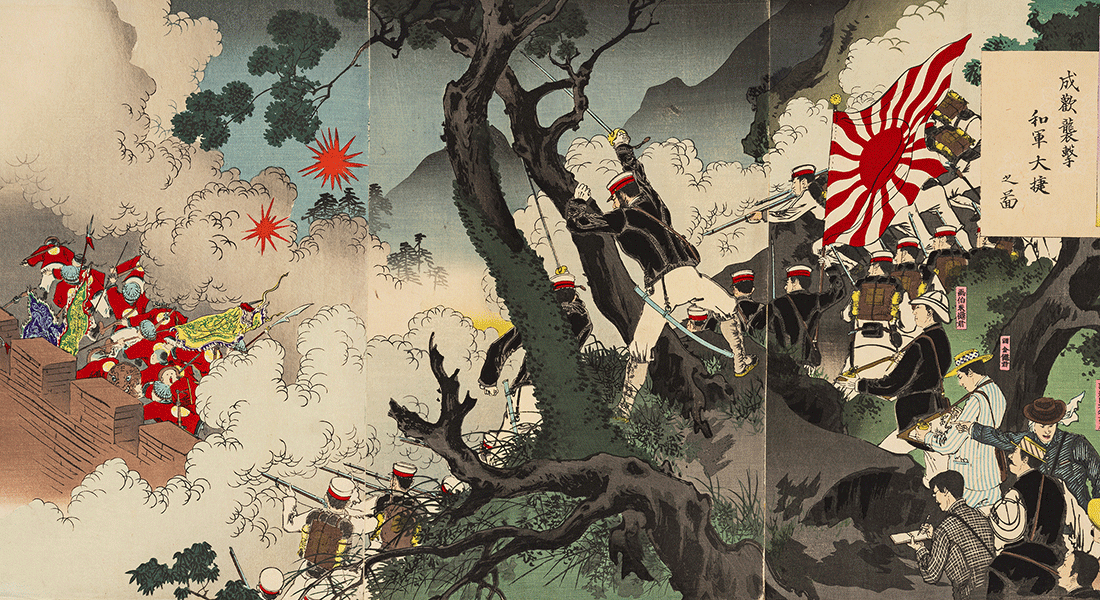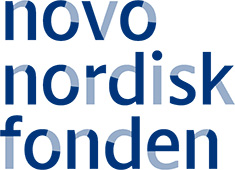In Love and War: Curators’ Talk
Meet the curators Asato Ikeda and Gunhild Borggreen of the exhibition In Love and War at the Designmuseum Denmark. The exhibition showcases Japanese woodblock prints from the Designmuseum collection. The title of the exhibition evokes the proverb “All is fair in love and war,” implying the unfairness of both domains.

The exhibition In Love and War focuses on the deceptive nature and ideologically constructed aspects of the prints and consists of two sections: prints of beautiful women from the Edo period (1603–1868) and prints of battles and soldiers at war from the Meiji period (1868–1912).
Asato Ikeda’s talk covers the first section of the exhibition on the theme of “Pictures of Beautiful Women” from the Edo period. Some women worked as yūjo (literally, “women for play”), serving customers in several ways, including sexually. These women became the subject of ukiyo-e (“pictures of the floating world”), market-driven popular prints that satisfied the desire of the public—mostly those belonging to the samurai and merchant classes—for entertainment.
Gunhild Borggreen’s talk covers the second section, “Modern Warfare in Japanese Prints,” containing war prints (sensō-e) from the first Sino-Japanese war (1894–1895) and the Russo-Japanese war (1904–1905) from the latter half of the Meiji period. War images were romanticised representations of patriotism and bushidō, samurai spirit, and functioned as visual propaganda for Japanese nation-building and imperialism.
The lectures will be in English. After the lectures, there will be a guided tour of the exhibition.
Everyone is welcome and the event is free of charge. However, due to limited seating, please sign up on the Designmuseum event site.
Asato Ikeda
Associate Professor, Fordham University, New York City/ Novo Nordisk Visiting Professor, University of Copenhagen
Beautiful Women or Indentured Laborers? Visual Culture and Prostitution in Early Modern and Modern Japan
One of the prominent themes in Edo-period woodblock prints is the portrayal of beautiful women who worked as prostitutes in legalized prostitution districts, such as the Yoshiwara pleasure quarters, located in what is now Tokyo. The lives of these women were marked by profound contradictions. They could be seen adorned in luxurious kimonos, admired as fashion icons, and equipped with refined education in calligraphy, poetry, painting, and music, as evident in the prints and paintings from this era. Yet, it is essential to acknowledge that they had been compelled into prostitution due to their impoverished backgrounds and were constrained within isolated, walled districts, often laboring under debt bondage. After Japan opened its doors to the world in 1868, legal prostitution continued, and prostitutes, some of whom “specialized” in foreign clients, became subjects of photography for souvenir art.
Asato Ikeda is the author of The Politics of Painting: Fascism and Japanese Art during the Second World War (University of Hawaii Press, 2018), the co-author of A Third Gender: Beautiful Youths in Japanese Edo-Period Prints and Paintings (1600–1868) (Brill; Royal Ontario Museum Press, 2016), and the co-editor of Art and War in Japan and its Empire: 1931-1961 (Brill, 2012).
Gunhild Borggreen
Associate Professor, Department of Arts and Cultural Studies, University of Copenhagen
Samurai Ideals in Modern Warfare? Prints of the Sino-Japanese war (1894-95) and the Russo-Japanese war (1904-05)
In the Meiji-period (1868-1912), Japan quickly modernized and Westernized, aiming at building a modern national state on par with Western nations and joining the “club” of Western imperialism. New interpretations of samurai ethics and moral code, known as bushidō, “the way of the warrior,” became propaganda tools for the Japanese government and military in the formation of the nation state Japan. In this presentation, I will present examples of nishiki-e, colour woodblock prints, from the collection of the Design Museum Denmark in which the the imaginary samurai is turned into soldiers in the modern Japanese army and navy. The prints depict scenes from the Sino-Japanese and Russo-Japanese wars, both of which were pivotal events for Japan’s territorial expansion into the Asian continent. The prints were used for journalism, entertainment, and patriotism, and they deployed a number of visual techniques to convey their message of national propaganda to the Japanese audiences. The talk will include comments on the Danish reception of the Russo-Japanese war in 1904-1905.
Gunhild Borggreen is the author of Begærets billeder: Visuel kultur i japanske træsnit (Images of Desire: Visual Culture in Japanese Woodblock Prints), forthcoming from Strandberg Publishing in June 2024. She is the co-editor of Dead or Alive! Tracing the Animation of Matter in Art and Visual Culture (Aarhus University Press, 2020), and has published on issues related to gender, technology and cultural identity in contemporary Japanese visual arts in The Routledge Companion to Gender and Japanese Culture (Routledge, 2020), Cultures of Participation: Arts, digital Media, and Cultural Institutions (Routledge, 2020), and numerous journals.

